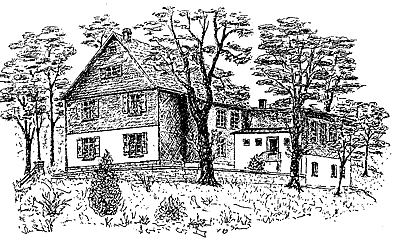7. Rhineland and the Lower Rhine
Unlike that in the regions described up to now, the Reformed confessionalisation
in Rhineland was not uniform. One reason for this is that up to the time
of the Reformation the dukes in Rhineland possessed many different, small,
so-called sub-rules, some of which were ruled by counts from other German
regions.
Already early on there were influences of Luther in Rhineland. From 1519
many of the people of Rhineland studied e.g. in Wittenberg. Individual
rules of the nobility became Protestant. The fate of Adolf Clarenbach,
a supporter of the Lutheran doctrine who was burnt at the stake in Cologne
in 1529, shows that the Reformation had only been able to establish itself
in part. An attempt of Reformation in Cologne under the Archbishop Hermann
of Wied failed in 1543. As a result, the Archbishop retired from his
office. From then on, Rhineland was determined by the coexistence of
Catholic and Protestant congregations.
The emergence of Reformed congregations happened in two ways – “from
below” and “from above.” The Reformation “from
below” is to be remembered in the first place in connection with
the refugee congregations. From 1545, refugees of Reformed conviction
from England, France and the Netherlands settled in Wesel, Aachen, Duisburg
and Cologne, among other places. They formed lively and well-organised
confessional churches, “reformed according to God’s Word,” and
possibly as a result were attractive to many of the locals. A whole series
of “secret congregations” arose. Despite the successes, there
was opposition and some suppression, in which the congregations in the
Lower Rhine in the Dutch struggle for freedom became particularly involved
and had to suffer under Spanish persecution (the self-designation “congregations
under the cross” arose in this time). In an assembly at Wesel in
1568, delegates from the refugee congregations in Wesel, Emden and London
assembled to discuss how the presbyterial-synodal constitution constructed
by them could be maintained. The Synod of Emden in 1571 “of the
Dutch churches, which are under the cross and scattered over Germany
and East Friesland” (so goes the self-description), passed this
constitution, in which both the independence of the individual congregations
and the cohesion of the congregations is set out. This presbyterial-synodal
constitution defines, among other things, the structure of the Protestant
Church in Rhineland up to the present day.

Pfarrhaus
Neviges
Besides this Reformation “from below,” there was also the more typical introduction of the Reformed confession in Germany in various sub-rules. In this way, the various sub-rules functioned as “protectors” (H. Klueting) of the Reformed confession in various regions of the Lower Rhine, Berg, Hohensolms-Braunfels and Wittgenstein, in Sayn-Altenkirchen and the Palatinate-Zweibruecken, so that one can without doubt speak of an “advance of Calvinism” (E. Muelhaupt). Under the protection of the Bernsau rulers, the first Reformed synod of Berg met in 1589 in Neviges.
In 1610 in Duisburg, the first Reformed general synod of the Rhineland took place, in which the presbyterial-synodal constitution for the Reformed congregations was passed for the four regions Juelich, Cleves, Berg and Mark. In 1617 this was arranged and worked out in more detail in a church constitution. The synods as governing body of the church throughout the whole of the 17th Century and also to a large extent in the 18th Centuryproved to be in a position to direct the course of the congregations. At the same time, the Reformed John Sigismund, who had become the Elector of Brandenburg, took over the rule as successor of the last Duke of Cleves. He strengthened the Reformed, among other things, by the founding of a Reformed high school in Duisburg in 1655. Between the Lutherans and the Reformed, but also amongst the Reformed themselves, some fierce conflicts took place over dogmatic questions (e.g. concerning free will, the doctrine of predestination etc.). In the 17th Century, possibly in connection with the emphasis on right doctrine (Orthodoxy), Pietism found favour with many of the Reformed, both in modest and in enthusiastic form. To be named in this connection are, for example, the so-called “Ronsdorfer Rotte” under Elias Eller, who built the Kingdom of God on a hill outside of Elberfeld, but also Gerhard Tersteegen, who was inclined towards mystical Pietism but not lost in mysticism, and whose effects can scarcely be overestimated. The Reformed congregations belong today to the “Protestant Church in Rhineland.” Some of the congregations have remained Reformed; others have merged with Lutheran congregations to form united congregations.